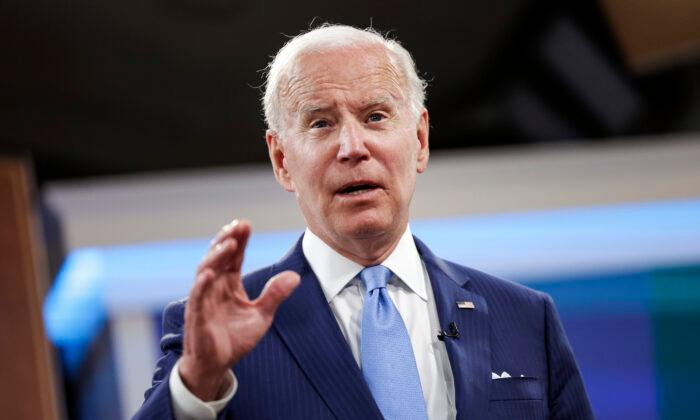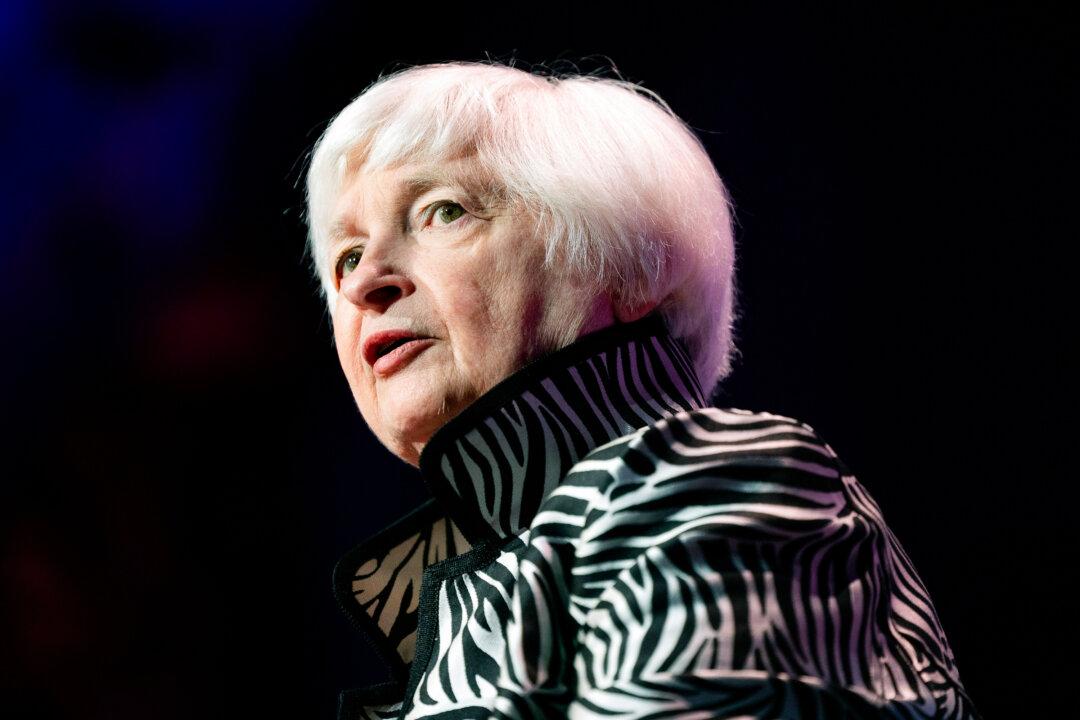The White House has struggled mightily to convince people that it can do something about inflation. Handlers finally decided to go straight to Wall Street with its message.
This might have been an even worse idea. The results reveal not one word about the real problem and the supposed solutions are strangely disconnected from any causative agent that would address the problem. That’s because the only real solution would amount to political suicide.
On the issue of causation, President Biden has discerned the following: “Putin’s war,” the turmoil in energy markets, and supply chain problems. But there is a huge issue here. The inflation problem long preceded the war, it affects all sectors apart from energy (though transportation is currently worse), and supply chain breakages, while significant, don’t account for the fullness of the problem and, moreover, the Biden administration bears responsibility for this too by not normalizing post-lockdown economic life fast enough.
The narrative then quickly pivots to a message: it is not all that bad. We are experiencing the “fastest decline in unemployment on record, and millions of Americans getting jobs with better pay.” The first part is an easy thing to do following lockdowns (coerced unemployment), obviously. As for the “better pay,” someone should tell him that 1) wages are prices too and thereby subject to inflation, plus 2) they are nowhere near keeping up with consumer price inflation, meaning that American workers are right now experiencing devastating pay cuts.
Also he reminds us that “The U.S. is in a better economic position than almost any other country.” That is a heck of an observation following the most devastating global economic crisis in our lifetimes. It’s like living through a hurricane and observing that at least your house is still standing whereas your neighbor’s was swept away with the tide.
Let’s move on to the solutions. “First, the Federal Reserve has a primary responsibility to control inflation,” he begins, passing the buck. “My predecessor demeaned the Fed, and past presidents have sought to influence its decisions inappropriately during periods of elevated inflation. I won’t do this.” In other words, it’s all the fault of the central bank if this doesn’t get fixed.
And yet maybe it is time to demean the Fed! We’ll get to its bad predictions and policies here in a bit.
“Second, we need to take every practical step to make things more affordable for families during this moment of economic uncertainty.” Elaborating, he says we must keep up the war, pass “clean energy tax cuts” (read: he will keep squeezing fossil fuels), and keep “cracking down on the exorbitant fees that foreign ocean freight companies charge to move products.”
The latter point is especially troubling because anti-gouging regulation is nothing but price controls by another name. That leads to more shortages, not less. If producers cannot respond to supply and demand in a rational way, there will be no hope for addressing the core problem.
Further, he is pushing legislation on housing that means “building more than a million more units.” We can only hope that this doesn’t mean more public housing that the United States smartly abandoned in the 1970s.
Three, “we need to keep reducing the federal deficit, which will help ease price pressures” through “an increase in revenue.” While it is true that a balanced budget mitigates inflation over the very long term, the drive to achieve that immediately can only mean tougher tax enforcement, which he also promises. Just what Americans need in the midst of high inflation: an old-fashioned audit!
Let’s return now to the subject of the Fed. Charts show that the most reliable money supply aggregate (M2) has increased 41.1 percent since lockdowns began. The Fed volunteered its printing presses to fund an insane spending bonanza by Congress, beginning in late March 2020 (an increase of 50 percent followed by 40 percent after Biden took office).
It’s nearly a dollar-for-dollar exchange: spend, print, repeat, for a total exceeding an unthinkable $6 trillion. This is so unbearably obvious that we don’t need to say it and yet, so far as I know, no one at the White House has actually said it.
- On Feb. 21, 2021, Fed chairman Jerome Powell told the Senate Banking Committee: “I really do not expect we’ll be in a situation where inflation rises to troublesome levels .... This is not a problem for this time.”
- On March 14, 2021, Treasury Secretary Janet Yellen told ABC This Week: “Is there a risk of inflation? I think there’s a small risk .... So I don’t think it’s a significant risk.”
- On May 4, 2021, Yellen again said the line, this time at a roundtable sponsored by The Atlantic. “I don’t think there’s going to be an inflationary problem, but if there is, the Fed can be counted on to address them.” Obviously the Fed did not act. Quite the reverse.
- On June 5, 2021, began the whole “transitory” phase of rhetoric. “We have in recent months seen some inflation, and we — at least on a year-over-year basis — will continue, I believe through the rest of the year, to see higher inflation rates, maybe around 3 percent,” Yellen said. “But I personally believe that this represents transitory factors.”
- On June 6, 2021, we got just a hint of honesty from Powell. “Inflation could turn out to be higher and more persistent than we expect,” he said.
- Only six weeks later, on July 16, 2021, Biden personally contradicted Powell. “Some folks have raised worries that this could be a sign of persistent inflation. But that’s not our view. Our experts believe and the data shows that most of the price increases we’ve seen are — were expected and expected to be temporary.”
- On Aug. 1, 2021, the Council of Economic Advisers tweeted: “One month does not make a trend (monthly inflation slowed in May before rebounding in June), and we know supply constraints persist in various sectors. However, July’s deceleration is encouraging.”
- By the end of November, the administration was again saying that inflation is “transitory.”
The latest moves by the Fed suggest that they will not do what they should do, which is dramatically change directions in the discount rate, sell off assets from the Fed’s balance sheet, and essentially shock the markets into reality and free up prices to jump and the recession to take its course.
The result would be perhaps two years of pain but it would reset the American economy on a solid growth path. Washington today has no political will for such a plan, simply because everyone is thinking not about the good of the whole but the short-term political cost.
And what’s the choice? To trust these people who have been consistently wrong for more than a year? It’s a tragedy, and a man-made one at that. This inflation was manufactured in a lab. The rest has been nothing but an attempt to cover it up.
As a final note, real-time price indicators show an inflation rate not at 8 percent but rather at 12 percent, with transportation leading the pack, which is why you have probably rethought your summer travel plans. This could be just the beginning of the pain, as we drift ever deeper into the worst of all worlds: inflation plus recession plus labor shortage. We’ve never experienced that combination in our lifetimes.





